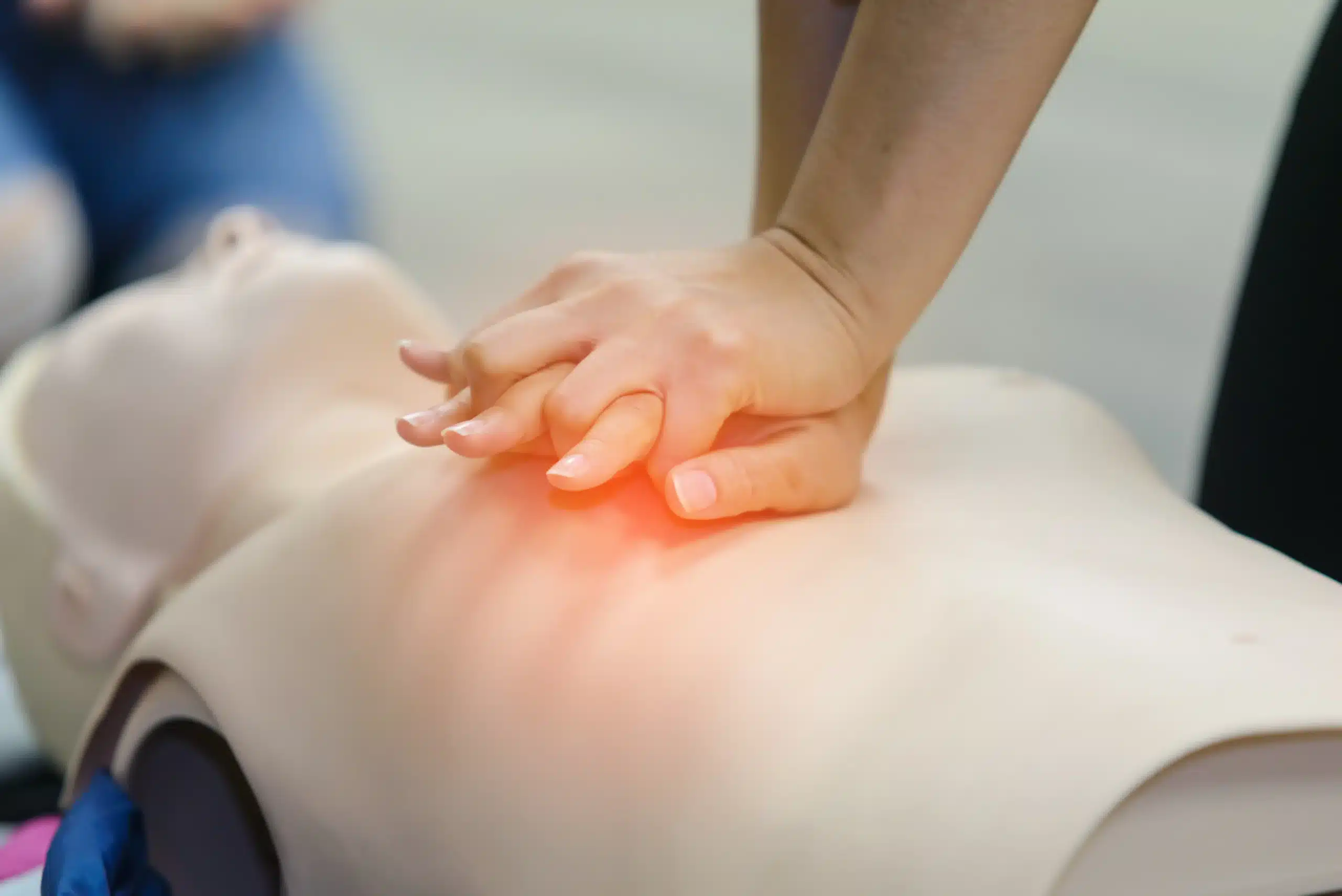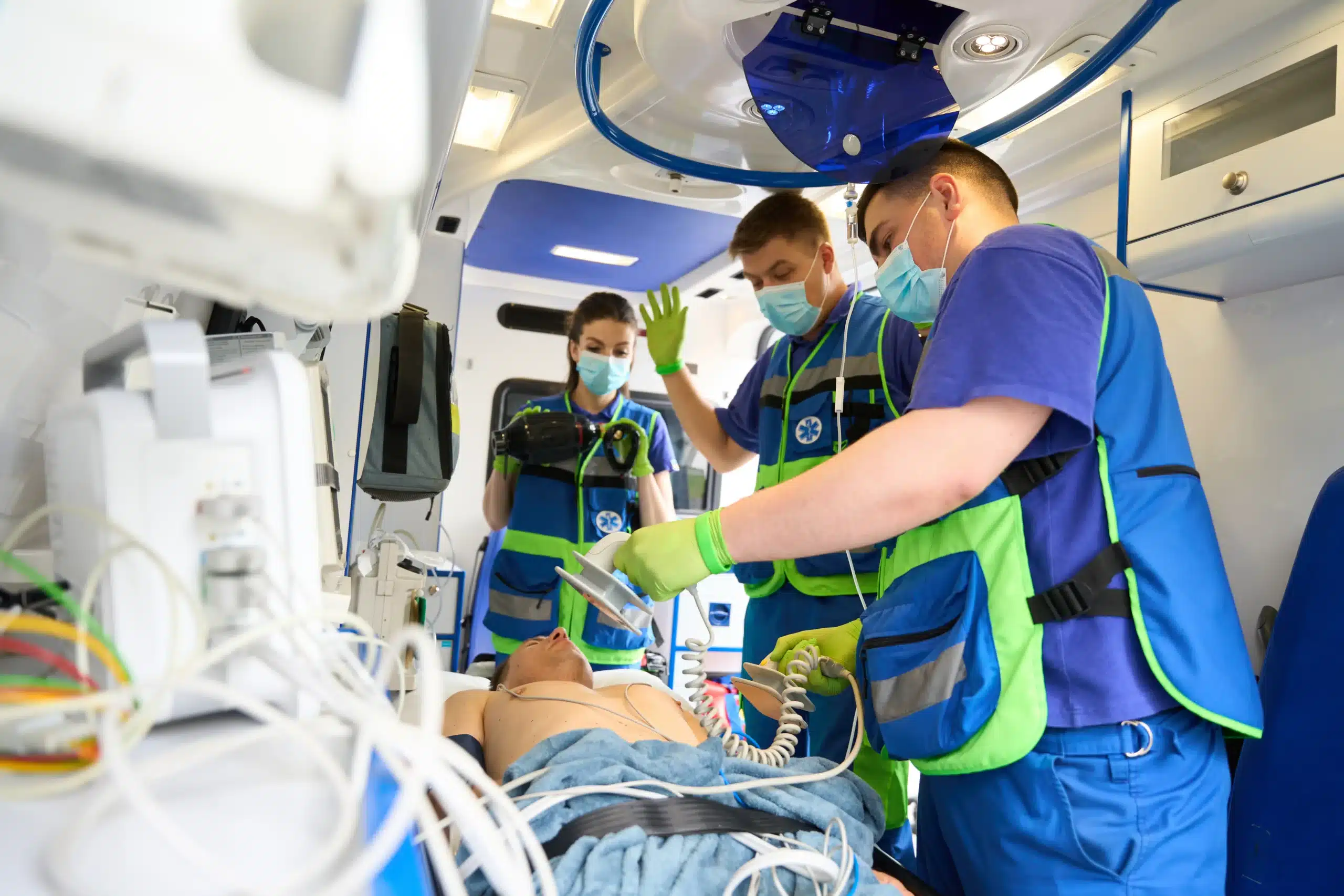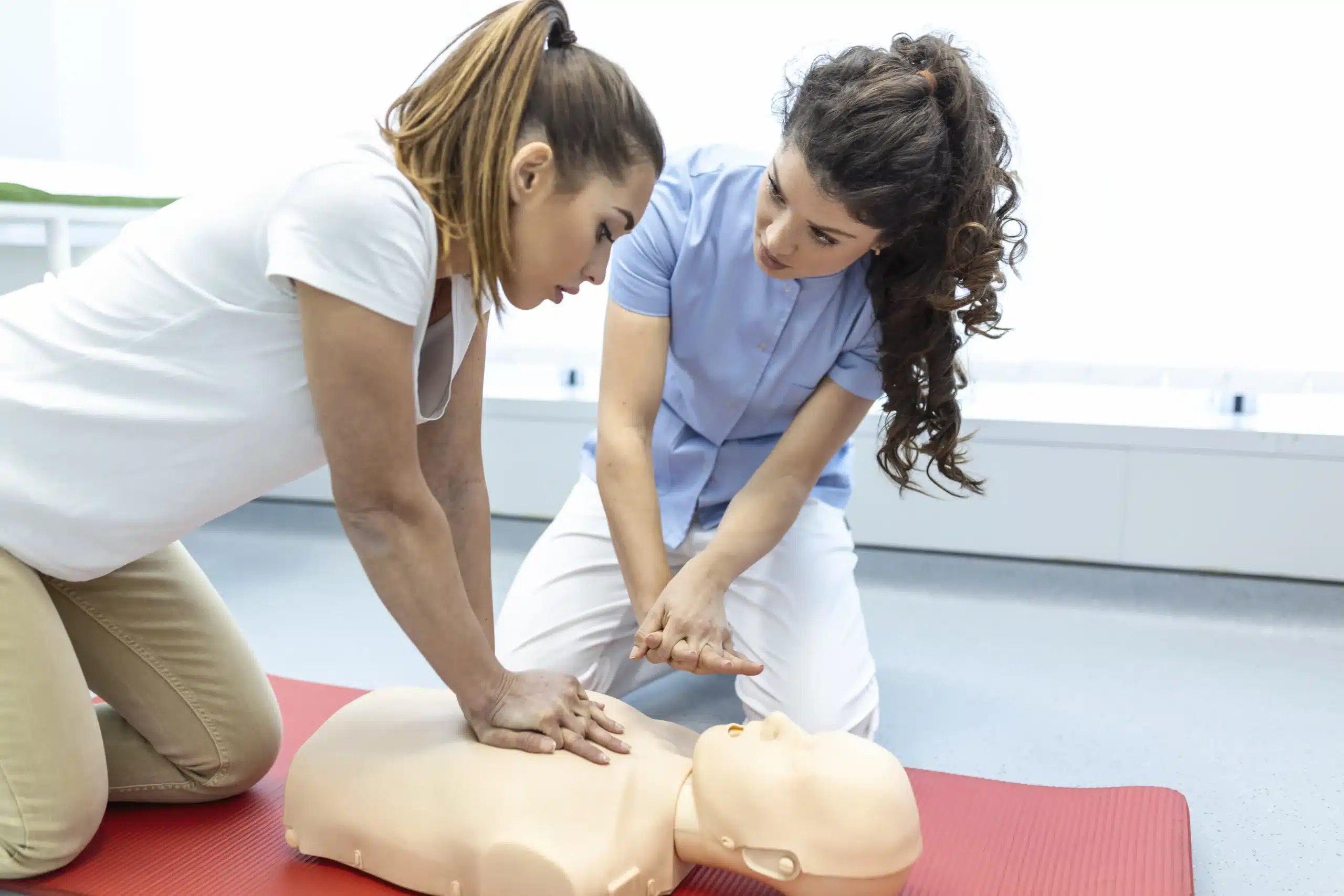Children’s safety is a paramount concern for parents, caregivers, and educators. Knowing how to respond effectively in a medical emergency can bring peace of mind and potentially save a life. Pediatric first aid training in San Rafael provides the essential skills and knowledge to handle a wide range of childhood medical situations. This guide explores the importance of this training, highlighting key skills, reputable training providers in San Rafael, and factors to consider when choosing a course. We’ll also address common misconceptions and offer practical tips for creating a safer environment for children.
Key Takeaways
- Pediatric first aid training is essential for everyone: Whether you’re a parent, grandparent, teacher, or caregiver, this training gives you the skills to confidently handle childhood medical emergencies.
- Find a course that fits your lifestyle: Look for options like online learning, in-person classes, or blended learning programs to accommodate your schedule and preferred learning style. Consider factors like class size and instructor experience.
- Stay current with the latest guidelines: Maintain your certification with regular renewal courses and continuing education opportunities to keep your skills sharp and ensure you’re providing the best possible care.
What is Pediatric First Aid Training?
Pediatric first aid training gives you the skills to handle medical emergencies involving infants and children. It covers everything from minor injuries like cuts and scrapes to more serious situations like choking, allergic reactions, and breathing problems. These courses offer hands-on instruction so you can stay calm and take effective action when a child’s health is on the line. Knowing how to assess a situation, provide immediate care, and get medical help can make all the difference. San Rafael CPR Classes offers comprehensive pediatric first aid training.
What Makes Pediatric First Aid Different?
Children have different physiological responses to injuries and illnesses than adults. Pediatric first aid recognizes these differences. The training focuses on age-appropriate responses and techniques tailored to a child’s developmental stage. For example, CPR for an infant differs from CPR for an older child. Pediatric first aid training explores these nuances, giving you specialized knowledge to address children’s unique needs. This specialized training helps parents, caregivers, and anyone working with children respond effectively in a crisis. Pediatric first aid courses cover these important differences.
Why is Pediatric First Aid Important?
Kids are prone to accidents. A good understanding of pediatric first aid can help you respond effectively in emergencies, possibly minimizing harm and even saving lives. Whether you’re a parent, grandparent, teacher, or someone who spends time with children, having these skills offers peace of mind. Knowing you can handle a medical situation involving a child brings a sense of security and preparedness. Consider taking a pediatric first aid course—it’s an investment in the well-being of the children in your life.
Essential Pediatric First Aid Skills
This section covers essential skills taught in a pediatric first aid course. Remember, this information is for educational purposes and doesn’t replace hands-on training. For proper certification, sign up for a pediatric first aid class.
Infant and Child CPR
CPR for infants and children differs significantly from adult CPR. It involves modified techniques for chest compressions and rescue breaths, adapted to a child’s smaller body. Learning these specific techniques can be life-saving in emergencies. For more information on our CPR courses, visit our CPR page.
Choking Relief and Rescue Breathing
Choking is a frequent hazard for young children. Pediatric first aid training teaches you how to recognize the signs of choking and perform appropriate interventions like back blows and chest thrusts for infants, and abdominal thrusts (the Heimlich maneuver) for older children. Rescue breathing techniques are also covered, essential when a child isn’t breathing adequately. Our EMSA Child Care Health & Safety course covers these techniques in depth.
Managing Allergic Reactions and EpiPens
Food allergies and other allergic reactions are increasingly common in children. Pediatric first aid courses teach you how to identify the symptoms of an allergic reaction, like hives, swelling, and difficulty breathing. You’ll also learn how and when to administer an EpiPen, a life-saving device for severe allergic reactions.
Treating Burns, Wounds, and Bleeding
Minor burns, cuts, and scrapes are everyday occurrences for kids. Pediatric first aid equips you with the knowledge to clean and dress wounds properly, minimizing the risk of infection. You’ll also learn how to assess the severity of burns and provide appropriate first aid care.
Handling Fractures, Sprains, and Head Injuries
Children are prone to falls and other accidents that can result in fractures, sprains, or head injuries. Pediatric first aid training teaches you how to immobilize injured limbs, apply cold compresses, and recognize the signs of a concussion or more serious head trauma. Knowing how to respond can help prevent further injury and ensure the child receives prompt medical attention. Check out our Northern California CPR directory for more resources.
Top Pediatric First Aid Training Providers in San Rafael
Finding the right pediatric first aid training program is crucial for parents, caregivers, and anyone working with children. San Rafael has several excellent options. To help you make an informed decision, I’ve compiled a list of top providers and their specialties.
San Rafael CPR Classes
San Rafael CPR Classes offers a range of American Heart Association (AHA) courses, including PALS, ensuring comprehensive training for healthcare professionals and anyone interested in pediatric first aid. They also provide BLS, ACLS, CPR, and standard first-aid training at competitive prices, making them a one-stop shop for safety certifications. Their focus on AHA guidelines ensures your training aligns with the latest medical practices.
Safety Training Seminars
Safety Training Seminars, a woman-owned AHA Training Center, provides high-quality AHA courses in San Rafael. They offer BLS, ACLS, PALS, CPR, and first-aid certification courses seven days a week, catering to busy schedules. This flexibility makes it easier for working professionals and parents to fit training into their lives.
In-Home CPR
For a more personalized approach, In-Home CPR brings the training to you. They offer CPR, BLS, and first aid classes at your San Rafael home or business. Certifications come from various organizations, including ASHI, Red Cross, and AHA, giving you options based on your requirements. They have an ASHI two-year certification course for non-medical professionals seeking CPR and AED training.
American Red Cross
The American Red Cross is a well-known provider of CPR and first-aid certification courses in San Rafael. They offer various courses designed for different needs, from basic community classes to professional-level certifications. Their established reputation and wide range of courses make them a reliable choice. You can find more information about their offerings in our First-Aid Training in San Rafael guide.
Marin Health
Marin Health provides a comprehensive American Red Cross course covering CPR, AED, and first aid for adults and children. This combined approach is beneficial for those who want a broader skill set. Their program equips participants with the knowledge to handle various emergencies, from injuries and illnesses to life-threatening situations. Classes are available for those aged 15 and up.
Compare Course Features and Benefits
Choosing the right pediatric first aid course means understanding the nuances of each program. Here’s what to consider when comparing your options:
Certification Types and Recognition
Not all certifications carry the same weight. For a widely recognized and respected credential, look for courses aligned with established organizations like the American Heart Association. Their Heartsaver Pediatric First Aid CPR AED course is a great example, offering a trusted certification that holds value, especially for childcare providers or those in fields requiring specific credentials. Understanding the certifying organization helps ensure the course meets industry standards.
Course Duration and Flexibility
Balancing a busy schedule with training is often tricky. Course lengths vary—some are intensive, single-day programs, while others offer shorter sessions spread over time. Consider programs like our EMSA Child Care Health & Safety course, designed with flexibility in mind to accommodate different schedules. Think about what works best for your lifestyle: a condensed course or one that allows you to learn at a more gradual pace.
Class Sizes and Individual Attention
The learning environment itself plays a big role. Smaller classes often provide more opportunities for one-on-one instruction and personalized feedback. Providers like In Home CPR offer smaller class settings, sometimes even bringing the training to your home. This creates a comfortable atmosphere for asking questions and receiving individual attention. If you thrive in a more interactive setting, a smaller class size might be a good fit.
Hands-on Practice
True mastery of pediatric first aid comes with hands-on experience. Make sure the course you choose includes realistic scenarios and simulations. This practical approach lets you apply your knowledge in a safe environment, building confidence and preparing you for real-life situations. Regular refresher courses are also key for maintaining those skills and staying current with best practices. Our RQI classes are a great way to refresh your skills. Look for programs that prioritize this hands-on, practical training.
Pediatric First Aid Training Costs
Knowing the cost of pediatric first aid training is a practical first step. It helps you budget and compare options as you explore different courses and providers. Remember that pricing can change, so it’s always best to check with the specific provider for their most up-to-date pricing information.
Individual Course Pricing
Individual course pricing for pediatric first aid training in San Rafael varies based on several factors. The type of certification (basic or advanced), the course length, and the training provider all play a role. Basic pediatric first aid courses typically range in price, often reflecting the depth of material covered and the certifying organization. San Rafael CPR Classes offers a range of courses, including pediatric first aid, with flexible scheduling and competitive pricing to suit different needs and budgets.
Group and Corporate Rates
If you’re training a group, such as staff, a daycare team, or parents, explore group and corporate rates. Many providers offer discounted rates for group training, lowering the per-person cost. In-home training services can be convenient for groups, as the instructor comes to your location. These services often provide competitive corporate rates, making them cost-effective, especially for larger groups.
Discounts and Package Deals
Look for discounts and package deals that can make pediatric first aid training more affordable. Some providers offer discounts for parents enrolling in multiple courses or for groups training together. San Rafael CPR Classes often has a low price guarantee and various options that may include discounts for group enrollments or combined courses. Also, check if providers like Adams Safety Training offer special rates for licensed childcare providers, which can be helpful for parents who are also caregivers. These discounts can make a real difference in the overall cost.
Choose the Right Training Program
Finding the right pediatric first aid training program requires careful consideration of your specific needs and circumstances. It’s more than just picking the first available class; it’s about ensuring the training aligns with your schedule, learning style, and desired outcomes. Here’s a breakdown of key factors to consider:
Assess Your Needs and Schedule
First, think about why you’re seeking pediatric first aid training. Are you a parent wanting to be prepared for emergencies at home? A caregiver looking to enhance your professional skills? Or perhaps you need certification for a specific job or volunteer opportunity? Understanding your motivation will help you choose the right course content. For new parents and caregivers, a comprehensive pediatric first aid course covering common childhood injuries and illnesses is a great starting point.
Next, consider your availability. Do you prefer a weekend intensive course or would weekday evening classes fit better into your routine? Online pediatric first aid courses offer flexibility for busy schedules, allowing you to learn at your own pace. Explore different course formats to find one that complements your lifestyle. If you are a childcare provider in California, make sure the course you choose is EMSA-approved.
Evaluate Instructor Qualifications
The quality of your training depends heavily on the instructor’s expertise. Look for certified instructors with extensive experience in pediatric first aid and a passion for teaching. Check if the instructors are healthcare professionals actively working in the field, as this ensures their knowledge and skills are up-to-date. Don’t hesitate to ask about their certifications, experience, and teaching style. A qualified instructor will be happy to answer your questions and provide credentials. Before committing to a course, verify the instructor’s qualifications and ensure they meet the necessary standards. For healthcare professionals seeking recertification, our RQI program offers a streamlined and efficient option.
Read Reviews and Testimonials
Finally, tap into the experiences of others. Reading reviews and testimonials from past participants can offer valuable insights into the quality of a training program. Look for comments about the instructor’s teaching style, the course content, and the overall learning experience. Positive reviews often highlight engaging instructors, practical hands-on training, and a supportive learning environment. These firsthand accounts can help you gauge whether a particular program is a good fit for you. Remember, investing in pediatric first aid training is an investment in your child’s safety and well-being. Choosing the right program can empower you to respond confidently and effectively in any situation. San Rafael CPR classes offers a low price guarantee, ensuring you receive high-quality training at a competitive price.
Register for Pediatric First Aid Courses
Once you’ve decided to learn pediatric first aid, signing up for a class is straightforward. You can register for a course that fits your schedule and learning style in a few different ways.
Online Registration
Online courses are a convenient way to learn pediatric first aid. You can move through the material at your own pace and review sections as needed. Many online platforms include videos and interactive exercises. For more information on the benefits of online learning, check out this article on pediatric first aid training. If your profession requires licensing, confirm that the online course you select meets those requirements.
In-Person Sign-Up
If you learn best through hands-on activities and interaction with an instructor, in-person classes are a great choice. San Rafael CPR Classes offers a range of in-person pediatric first aid courses. Organizations like the American Red Cross and Bay Area CPR also offer in-person training in San Rafael. Visit their websites or give them a call to register and find a class schedule that works for you.
Required Materials and Prerequisites
Most pediatric first aid courses have minimal material requirements and prerequisites. It’s always wise to contact the training provider to ask about any specific requirements before registering. Cherry Tree Group suggests confirming the instructor’s certifications and asking to see the course curriculum. Some courses, like the Heartsaver Pediatric First Aid course, are designed for childcare providers and may have specific regulatory requirements. Understanding these details ahead of time will make your training experience as smooth as possible.
Maintain Your Pediatric First Aid Certification
Knowing pediatric first aid is a skill that can make a real difference. But like any skill, it needs regular refreshing to stay sharp. This section covers how to keep your pediatric first aid certification current and your skills ready for any situation.
Renewal Requirements and Timeframes
Pediatric first aid certifications are typically valid for two years. To stay certified, you’ll need to take a recertification course before your current certification expires. Check with your training provider for their specific renewal process and schedule your refresher course in advance. Don’t let your certification lapse—staying current ensures you’re always prepared.
Continuing Education
Even if your certification isn’t due for renewal yet, participating in continuing education can be incredibly valuable. Refresher courses and workshops help you stay up-to-date on the latest guidelines and techniques. They also offer opportunities to practice your skills and ask questions, building your confidence and competence. Convenient online pediatric first aid courses are also a great option for busy parents and caregivers. Regular training ensures you’re providing the best possible care for children in need.
Create a Safe Environment with Pediatric First Aid
Knowing how to respond in a medical emergency can make all the difference. Pediatric first aid training empowers parents and caregivers to create a safer environment for children, both at home and on the go. It’s about being prepared and knowing you have the skills to handle unexpected situations.
Implement Safety Measures at Home
Start by thoroughly childproofing your home. Secure heavy furniture, cover electrical outlets, and install safety gates. Store medications, cleaning supplies, and other potentially hazardous materials out of reach. Regularly check your smoke detectors and carbon monoxide detectors, and create a fire escape plan that everyone in the family knows. These proactive steps minimize risks and create a safer home environment. Investing time in learning and practicing pediatric first aid adds another important layer of protection.
Recognize and Respond to Emergencies
Pediatric first aid training equips you to recognize and respond to a range of emergencies, from minor cuts and scrapes to more serious situations like choking, allergic reactions, or breathing difficulties. Understanding the nuances of pediatric first aid is crucial for anyone caring for a child, and pediatricians stress the importance of having these skills. Taking a pediatric first aid course builds confidence to act quickly and effectively in an emergency, potentially minimizing harm and even saving a life. Knowing how to assess a situation, deliver appropriate first aid, and seek further medical attention when needed offers invaluable peace of mind. Consider taking a course with San Rafael CPR Classes to gain these essential skills.
Common Pediatric First Aid Misconceptions
Let’s clear up a few common misconceptions about pediatric first aid training that might be holding you back from learning these lifesaving skills.
“It’s Only for Professionals”
Many parents believe that pediatric first aid training is only for doctors, nurses, or EMTs. This just isn’t true. While medical professionals use these skills regularly, pediatric first aid training is designed for everyone, especially parents, caregivers, and anyone who interacts with children. Knowing how to respond to a child’s medical emergency can make all the difference before professional help arrives. Equipping yourself with these skills empowers you to confidently handle situations like choking, allergic reactions, or injuries. Our BLS certification course covers essential life support techniques.
“It’s the Same as Adult First Aid”
Another misconception is that pediatric first aid is identical to adult first aid. There are crucial differences in anatomy, physiology, and responses to illness and injury between children and adults. Pediatric first aid involves specific techniques tailored to a child’s smaller body and unique needs. For example, the way you perform CPR on a child differs from how you’d perform it on an adult. Understanding these differences is essential for providing safe and effective care. Our comprehensive pediatric first aid courses cover these vital distinctions.
“Online Training Isn’t Effective”
While in-person training offers valuable hands-on practice, online pediatric first aid courses can be incredibly effective. Online learning provides a flexible and convenient way to acquire essential knowledge and skills. Many reputable online courses incorporate videos, interactive exercises, and assessments to ensure you grasp the material. This format allows you to learn at your own pace and revisit information as needed, making it a great option for busy parents and caregivers. For a convenient option, explore our RQI classes for a blended learning approach.
Related Articles
- First-Aid Training in San Rafael: A Complete Guide – San Rafael CPR Classes
- Find First-Aid Classes Near Me: Your Certification Guide – San Rafael CPR Classes
- CPR & First-Aid Classes in San Rafael: A Complete Guide – San Rafael CPR Classes
- PALS Certification Corte Madera: Your Comprehensive Guide – San Rafael CPR Classes
- CPR Certification Near Me: A Practical Guide – San Rafael CPR Classes
Frequently Asked Questions
Q: Does pediatric first aid training cover specific childhood illnesses?
A: While pediatric first aid focuses primarily on handling injuries and emergencies like choking, allergic reactions, and breathing problems, some courses may touch upon recognizing the signs of common childhood illnesses. However, it’s important to remember that first aid training doesn’t replace medical advice. Always consult a doctor or other healthcare professional for diagnosing and treating illnesses.
Q: How often should I renew my pediatric first aid certification?
A: Most pediatric first aid certifications are valid for two years. It’s a good idea to check with your certifying organization or training provider for their specific renewal requirements and timeframe. Don’t wait until the last minute—scheduling your recertification course in advance ensures you’re always prepared.
Q: What if I’m not comfortable performing CPR on a child?
A: It’s completely understandable to feel hesitant about performing CPR, especially on a child. However, pediatric first aid and CPR training provides you with the knowledge and skills to act confidently in an emergency. Certified instructors create a supportive learning environment where you can practice these techniques in a safe setting. Remember, even basic life support can significantly improve a child’s chances of survival until professional medical help arrives. Our instructors at San Rafael CPR Classes are here to guide you every step of the way.
Q: Is online pediatric first aid training as good as in-person training?
A: Both online and in-person pediatric first aid training have their advantages. Online courses offer flexibility and convenience, allowing you to learn at your own pace and revisit material as needed. In-person classes provide hands-on practice and direct interaction with an instructor. Consider your learning style and schedule when choosing the format that best suits your needs. Many reputable organizations offer high-quality training in both formats.
Q: What if I have more questions after completing a pediatric first aid course?
A: Reputable training providers are committed to supporting your learning journey even after you complete a course. Don’t hesitate to reach out to your instructor or the training organization with any follow-up questions or concerns. They can provide additional resources, clarification on specific techniques, or guidance on staying up-to-date with the latest guidelines. We at San Rafael CPR Classes are always available to answer your questions and help you feel confident in your pediatric first aid skills.





